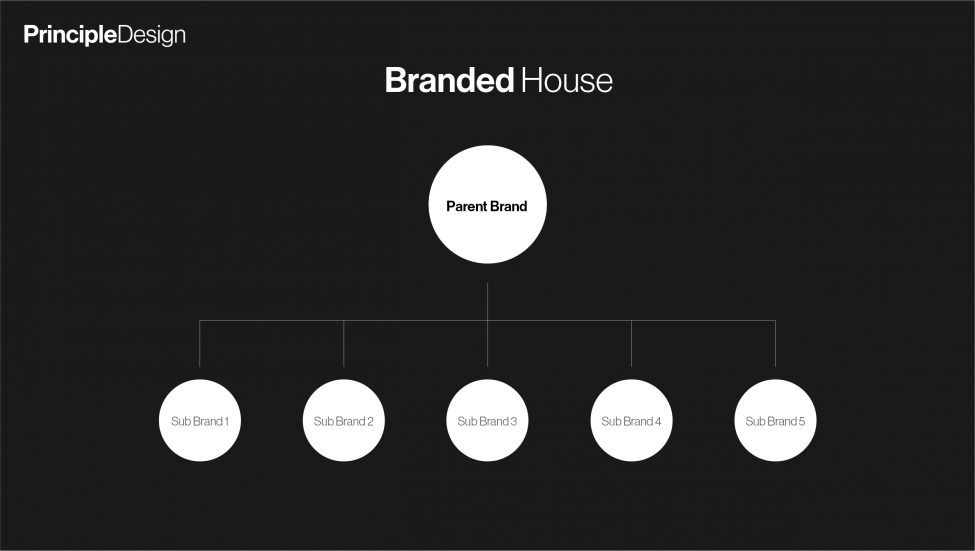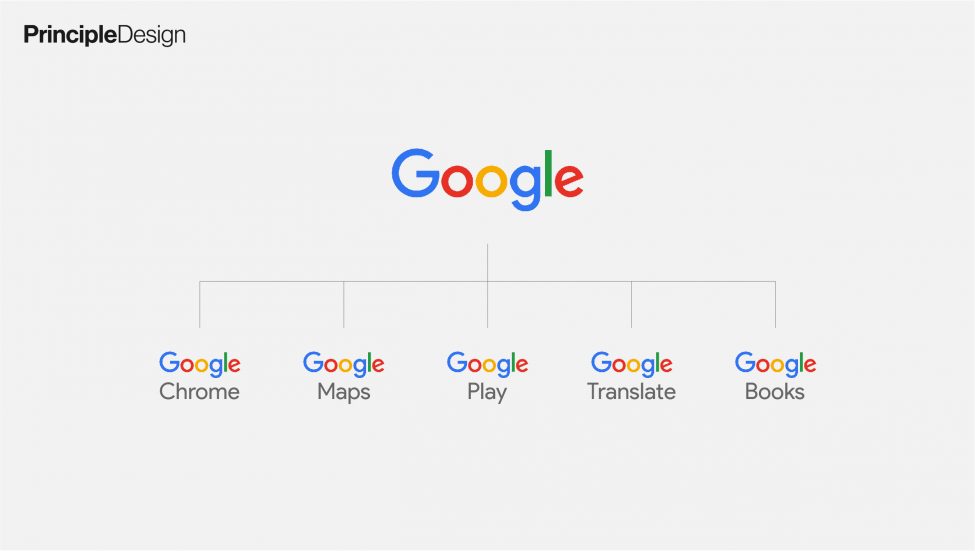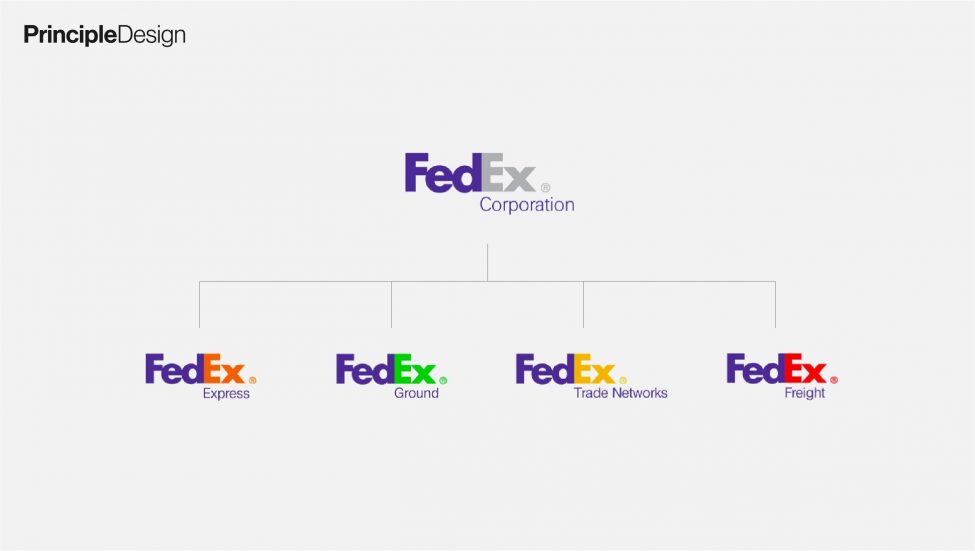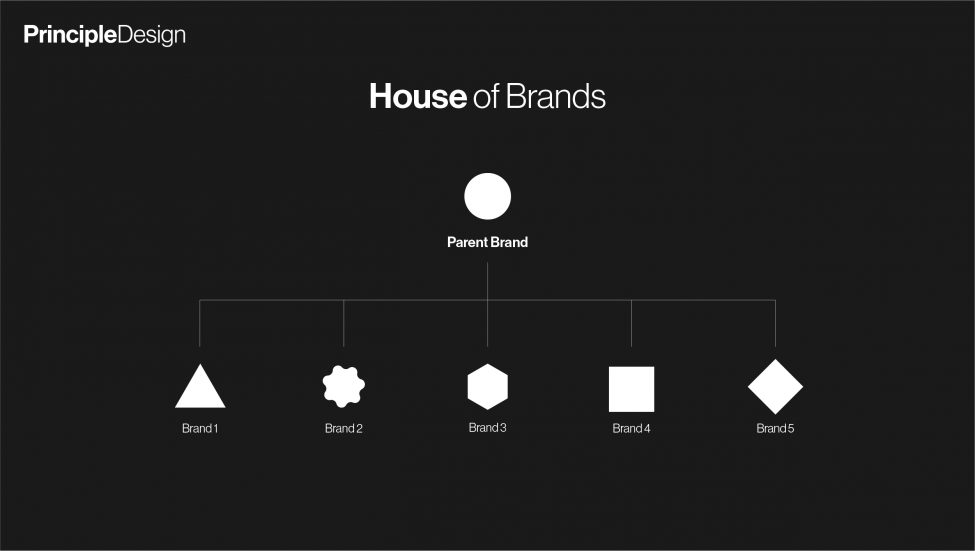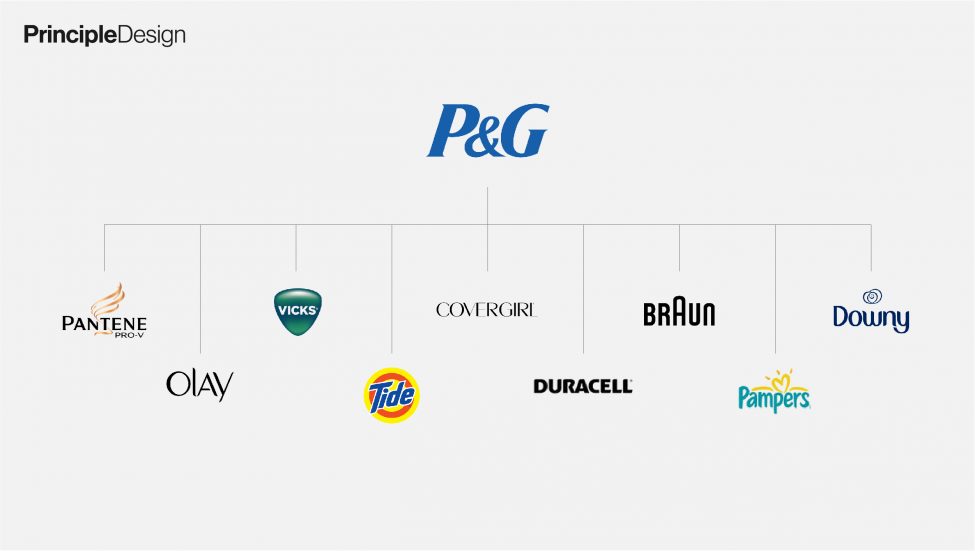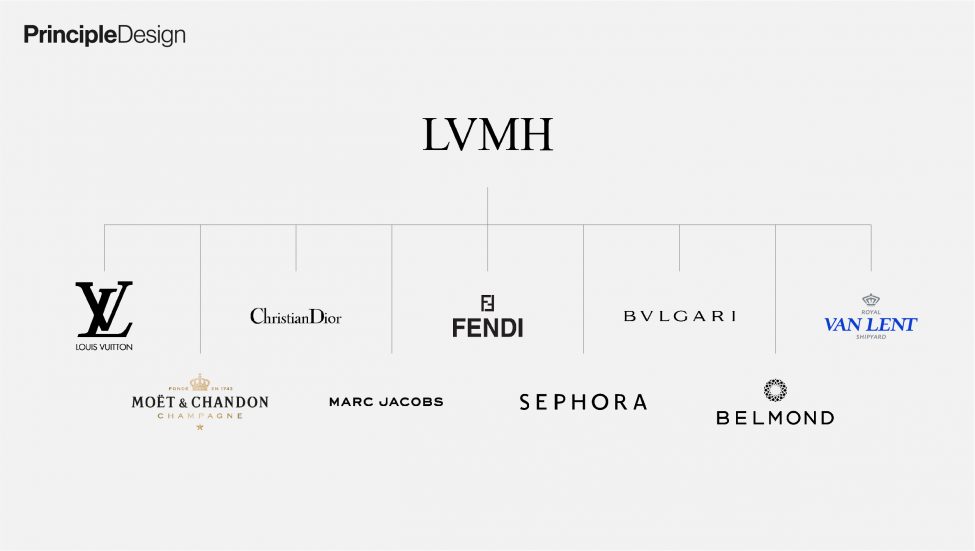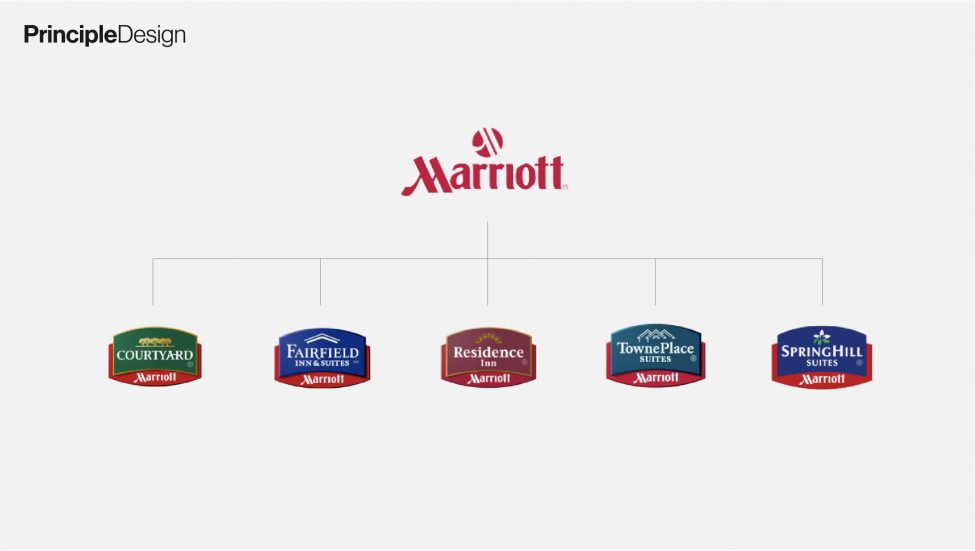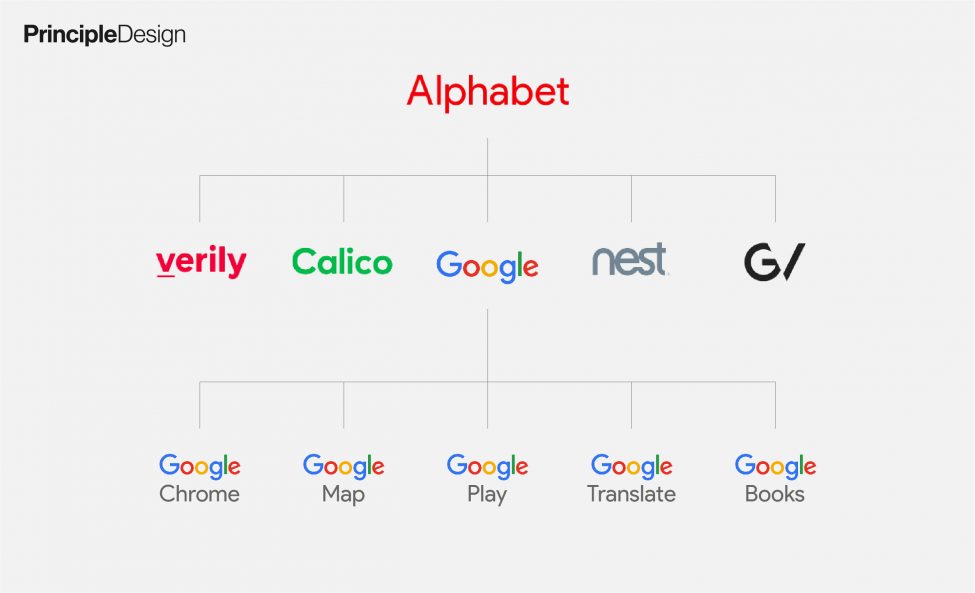Brand Architecture
Defining Brand Hierarchy
Brand architecture, as the name suggests, is about how brands, products, and services are structured within a company. It’s like a blueprint for your company and its sub-brands, explaining how they relate to one another. In case you were unsure, a sub-brand is a subsidiary or secondary brand that branches off from the primary parent brand but often has its own name and identity.
Understanding the relationship with brands and sub-brands, and how to structure your business from a bird’s eye view, is critical to the longevity and overall vision of your company. It might help to think of your business as a tree (your parent company or master brand) with many branches (your sub-brands). As that tree grows, you need to prune its branches to guide its direction and development. Leaving a tree to its own devices could result in a tangled knot, i.e. a chaotic alignment of your brands!
To translate this back to your business: As your enterprise grows—through acquisitions, mergers, multiple product offerings, or new ventures—a solid outline, on how to best arrange all the moving parts, can be vital to your ongoing success.
Brands that are part of an extended structure require a more involved design approach than for designing a standalone identity. Understanding sub-brands can assist in creating growth in businesses as well as providing a number of different income streams.
Because multi-tiered businesses are too complex for a one-size-fits-all brand architecture model, there are three broad approaches from which to choose. This is where knowledgeable agencies (like ours!) can help you determine the best course to organise your brands, ensuring a suitable alignment when it comes to the overall narrative you are envisioning for your brand(s).
Branded House
In the branded house structure, there is a visible parent brand and stemming from this are your sub-brands. Mostly all brands will share the same name, with some sort of qualifier to distinguish each brand separately. Two examples of companies using the Branded House structure are FedEx and Google.
Branded House is a useful method if your products or services are all fairly similar. Also, if you have a good reputation with your first brand you can leverage this onto your sub-brands, including later additions — a marketing or advertising ‘win’ for one brand is essentially a win for all of your brands.
House of Brands
This house of brands structure involves a much less visible parent brand. Sub-brands appear to act autonomously, with little to no affiliation with its parent brand. One well-known example (although because of the nature of House of Brands you may not have heard of them directly) is Proctor and Gamble—the parent company of sub-brands such as Head & Shoulders, Vicks, and Pringles. Another example is LVMH—umbrella over sub-brands like Moet and Chandon, Bvlgari, and Fendi.
The benefits of this structure include being able to target a broader demographic, and there’s no need to compromise on how each sub-brand is presented to the marketplace. If you own two different brands or services, which offer something similar, you can ‘compete’ against yourself. It also means if one sub-brand falls out of favour, your other brands are much less likely to be impacted.
Endorsed Brand
An endorsed brand is a blend of House of Brands and Branded House. The parent brand will often feature on some, or all, of its sub-brands but to a lesser extent. Even though the parent brand is not as prominently featured, it still plays a bigger role than in the house of brands structure. Examples of companies who employ the endorsed brand structure are Kellogg’s and Marriott Hotels.
Hybrid Brand
Similar to the endorsed brand, the hybrid brand borrows from both the house of brands and branded house structures. The hybrid structure differs from an endorsed brand model for two main reasons. Firstly, it usually has multiple tiers of hierarchy including sub-parent-like companies with its own set of sub-brands, branching from the parent company, as well as more stand-alone brands with no sub-brands. And secondly, it’s often structured out of necessity rather than a planned out brand strategy — a result of mergers and acquisitions. An example of this structure is Alphabet (the master brand of the parent company, Google).
Is Your Business Branching Out?
Understanding your service or product offering, as well as your operational structure, is key to being able to communicate to your intended audience clearly — whether you are a big or small business. Brand architecture brings clarity to complex systems of information, enables you to grow revenue through cross-selling and helps identify key communications to emphasise through the brand identity design. It can be quite a daunting process, so, if you think you’re ready to prune your business tree for growth, Principle Design would love to help! We can assist in structuring and defining your company, for optimal development as you begin to branch out.

